These strength training moves build power and stability for better performance in the water.
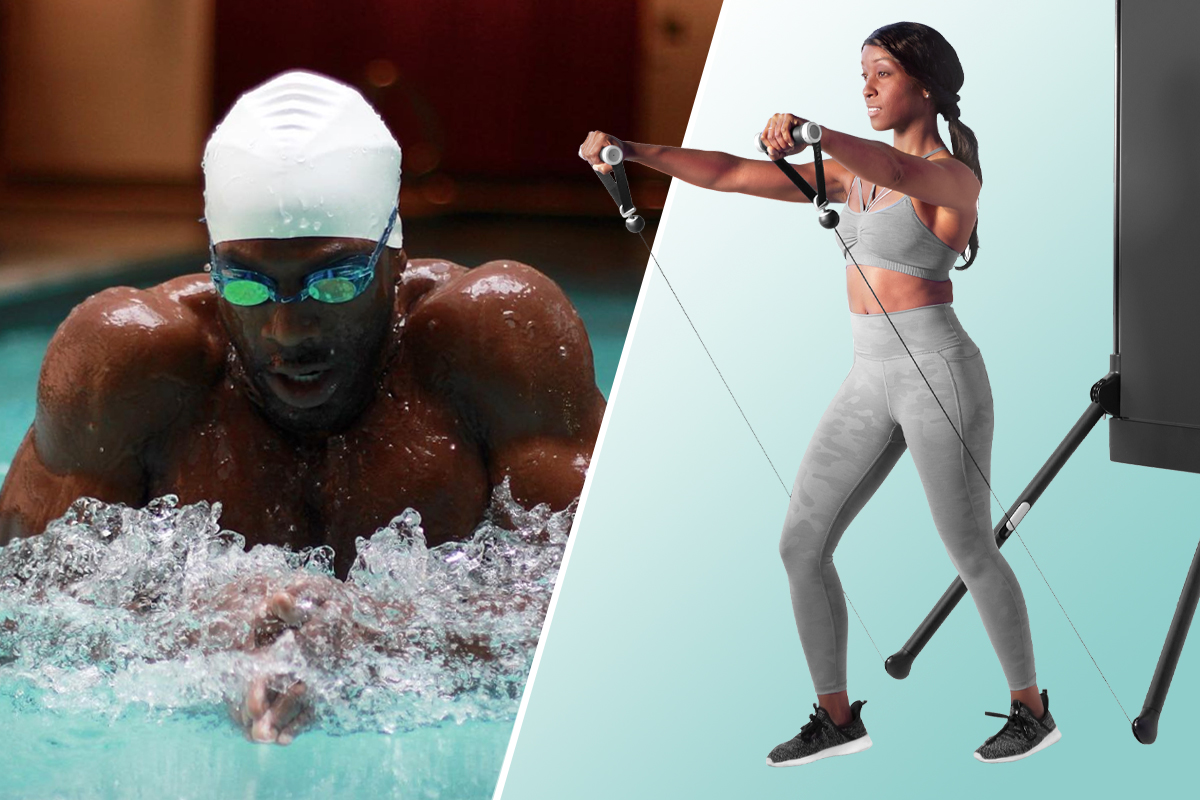
Swimming may be a low-impact sport without the high-intensity, joint-pounding motions of running, but it still requires both cardiovascular endurance and muscular strength to move your body through the water. That’s why strength training is so important for swimmers.
When Tonal coach and personal trainer Paul Wright swam competitively in high school, his team didn’t have a dedicated strength training program. However, Wright also played football and baseball—two sports that did get him into the weight room, which helped him build up the strength that gave him a big advantage in the water.
“Luckily for me, I was so heavily involved in athletics that I was always strength training,” he says. “That helped with my strength and power in the pool.”
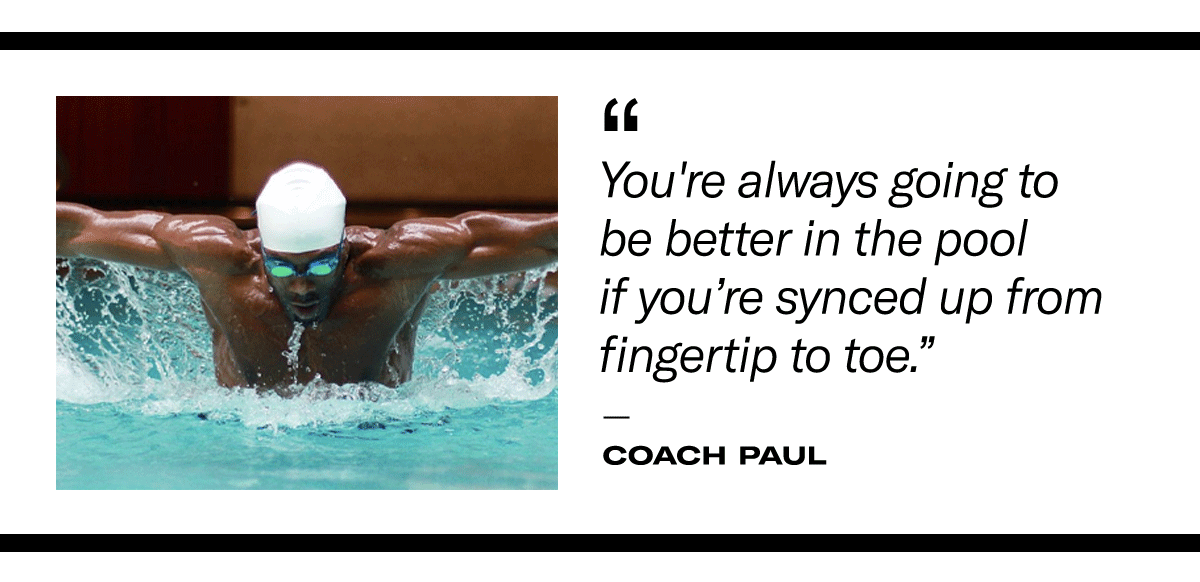
As Wright explains, strong swimming calls for power and stability, two skills you can gain through sport-specific strength training. “Think of what a backstroke swimmer looks like,” he says. “Their head and torso aren’t moving much but the swimmer creates power when they swing their arms. As they’re sweeping their hands up and back, different muscles are lengthening and shortening.”
With specific strength exercises, you can build the muscles that’ll help you swim more efficiently. Additionally, a review study showed resistance training can reduce overuse injuries in swimmers that result in shoulder and back pain. Below, Wright recommends seven exercises to add to your routine if you plan on hitting the water this summer.
Waiter March

Why it Works: A strong, stable core is essential to any swim stroke. “You have to get good at not flapping around everywhere,” says Wright. “In the waiter march, you can practice having a stiff spine and a braced core while you’re still moving.” Keeping your core tight as you test your shoulder strength in this move will hone that foundational swimming skill.
How to Do it: Slowly drive one knee up toward your chest, balancing on the opposite leg. Alternate legs. Keep your gaze forward to Tonal and stand tall like you’re standing against a wall.
Single-Arm Pullover with Single-Leg Hip Thrust (Contralateral)
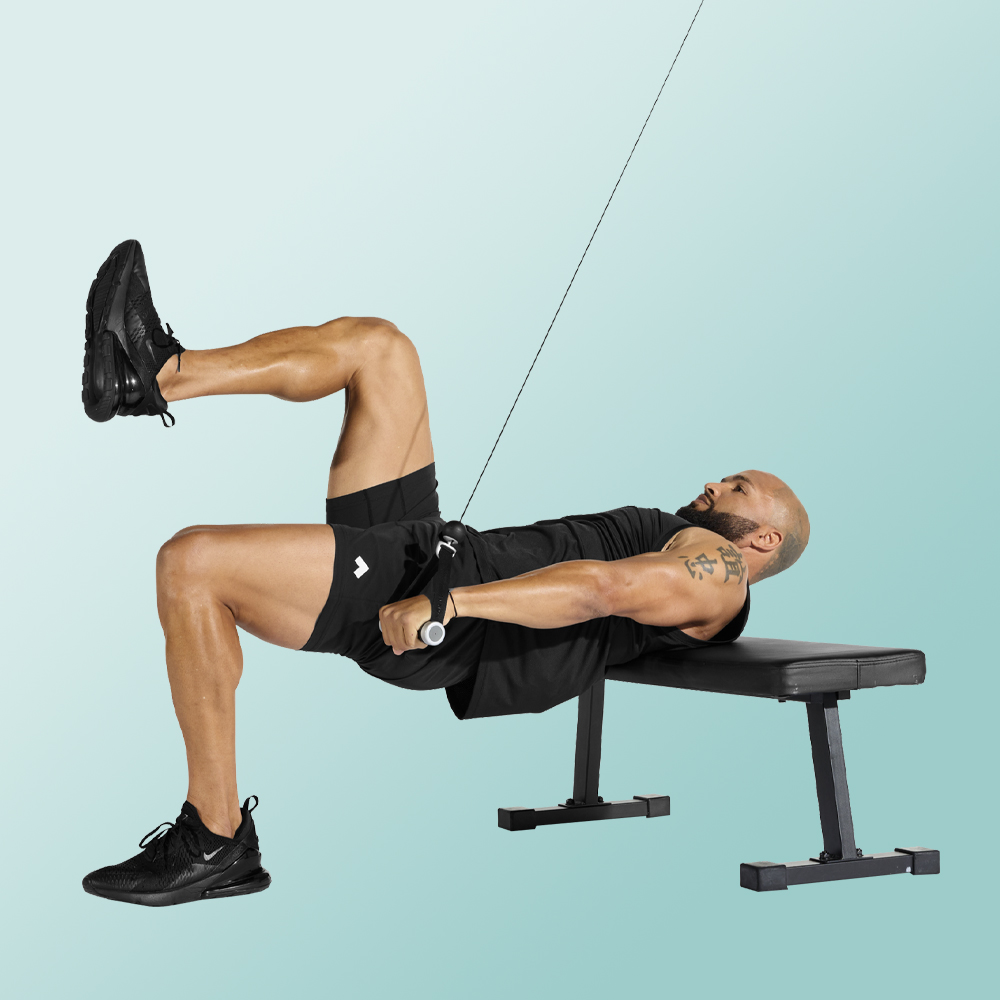
Why it Works: Because you use your entire body as you swim, Wright prefers compound moves that target multiple muscle groups over isolation exercises. This exercise engages the shoulders and lats while strengthening the posterior chain, which is important for generating power in the water. “When you’re thrusting your hips forward, you want to make sure you’re in tune with the back side of your body,” he says. “You’re always going to be better in the pool if you’re synced up from fingertip to toe.”
How to Do It: Facing away from Tonal, take the handle in one hand and then place your shoulders and upper back on the bench. Bring your ankles under your knees hip width apart with hips just above the floor. Lift the leg opposite of the working arm. Starting with your arm straight above your chest, pull the handle toward your hip while simultaneously lifting the hips toward the ceiling. Lower the hips back down as the arm lifts up and repeat.
Front Raise

Why it Works: Since every swim stroke involves pulling your body forward, Wright says it’s essential to strengthen your upper body pulling muscles, including the lats and delts. The front raise is one of his top picks for targeting the shoulders and upper back. “You’re building the muscles you need to pull yourself faster, more powerfully, and more efficiently in the pool,” he says.
How to Do it: Facing away from Tonal, grab the handles and take one step forward into a split stance position. Using your shoulders and upper back, raise your arms straight in front of you until they’re parallel with the floor, palms facing Tonal. With control, lower your arms back down to your sides and repeat.
Standing Face Pull

Why it Works: Like the front raise, this move works the back and shoulders but from a slightly different angle. Wright says it’s beneficial for swimmers specifically because it engages the erector muscles that help strengthen and stabilize the spine.
How to Do it: Using the shoulders and back, pull the rope toward your ears by aiming your elbows wide to the wall behind you. Slowly move your hands forward to finish.
Resisted DNS Star
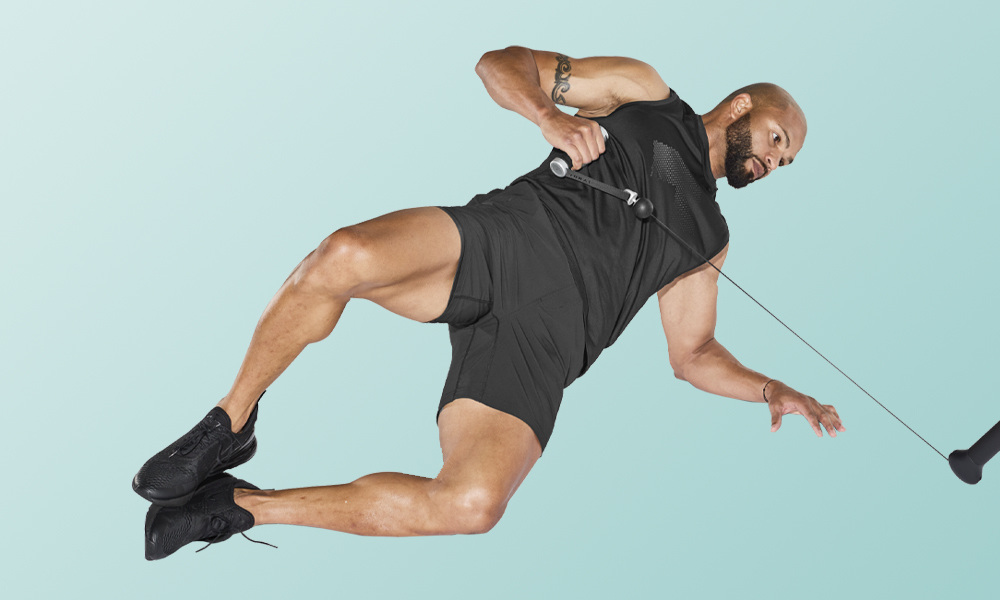
Why it Works: Swimmers focus a lot on their upper body, but Wright says it’s important not to forget that your hips and legs are active in the water as well. “You want to develop mobility and power in the abductors so you can push water with your legs,” he says. This move strengthens the abductors and tests hip stability, and adds in an upper body pulling motion.
How to Do It: Facing Tonal, get onto your side with your elbows directly under your shoulder and your knees bent, stacked on top of one another. Grab the handle with your top arm. As you pull the handle toward your torso just under your chest, lift your hips away from the floor and forward toward Tonal, keeping your bottom knee on the floor and lifting the top knee to open the hip. Let the handle move forward as you lower the hips down and back away from Tonal to the starting position.
Pillar Bridge With Row
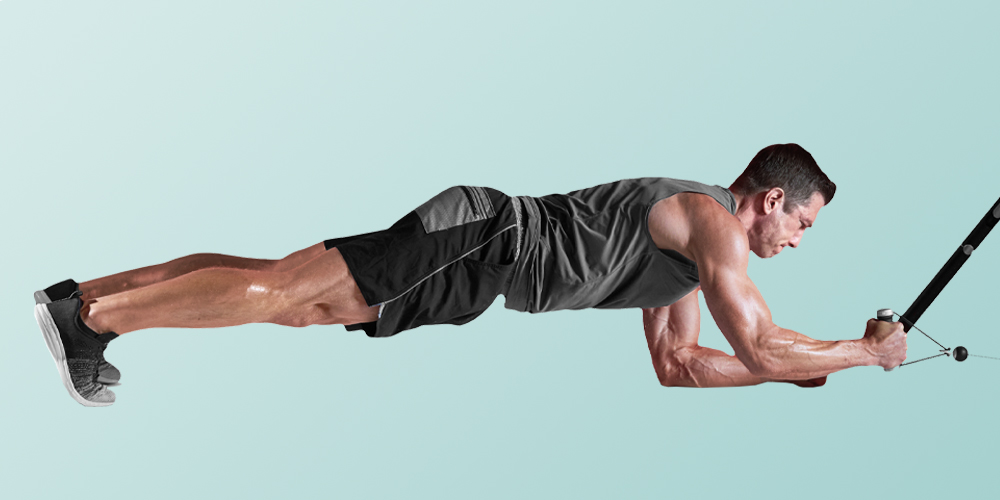
Why it Works: “Pillar bridge rows are a great unilateral movement,” says Wright. “When you’re pulling, your back’s working, your obliques are working, and your hips are connecting to your quads. It’s a movement that gets your body connected from head to toe.” Holding the pillar bridge position while you row engages the hips and glutes, which, as Wright explains, “all leads to you propelling and having more power in the pool.”
How to Do it: Get into a pillar bridge a few feet away from the arm with both elbows on the mat under the shoulders and feet hip distance apart, toes tucked. Grab the handle with one arm and pull toward your shoulder aiming the elbow toward the ceiling, rotating your palm to face your body. Slowly control the weight back to the starting position and repeat on the same side.
Jump Lunge

Why it Works: Swimming obviously requires a high level of endurance, but you’ll also need power for pushing off the block at the start of a race or kicking off the wall on a turn. “You want to build that power from a bent knee and ankle flexed position,” says Wright. A plyometric move like the jump lunge lets you practice that explosiveness you’ll want in the pool.
How to Do it: Press the floor away from you with the front heel and back toes to jump up toward the ceiling, bringing your arms overhead as you come up. Switch legs in the air to land with the opposite leg forward, and continue to alternate.


